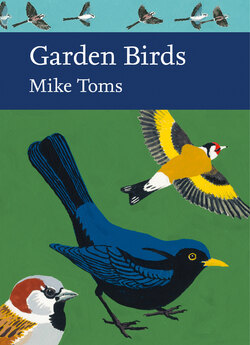Читать книгу Garden Birds - Mike Toms - Страница 8
Author’s Foreword and Acknowledgements
ОглавлениеPRIVATE GARDENS PROVIDE OPPORTUNITIES FOR engagement with the natural world, delivering connection with a broad range of different plants and animals. Birds are one of the most obvious and accessible components of the community of species using our gardens, visiting bird tables and hanging feeders, and occupying the nest boxes that we erect for them. Familiar species, like Robin, House Sparrow and Blackbird, provide a common currency, the basis to conversations had between neighbours, relatives and friends. That we choose to engage with garden birds, and talk about their visits and behaviour, underlines the central place that they play in our lives. For those who never venture into the wider countryside, garden birds can provide a window onto the natural world, helping to restore lost connections and contributing to health and well-being. But what about the birds themselves; what role do gardens play in their ecology and behaviour? What do we really know about the risks and benefits that shape how and why birds use gardens and the resources present within them?
Over the past two decades, I have been fortunate enough to have worked on garden birds, and with those who chose to watch them in their gardens. Through ‘citizen science’ projects, most notably the weekly BTO Garden BirdWatch scheme, I have been able to study the different ways in which wild birds use our gardens. I have been able to examine garden use in relation to the wider landscape, exploring both the seasonality of garden use and the longer-term patterns that have followed changes in how we manage the countryside. Thanks to the efforts and support of the volunteers participating in citizen science schemes, I have been able to explore some of the questions surrounding garden use and the role that gardens and their resources play in the lives of visiting birds, addressing the benefits of food provision, the risks of disease transmission and the threats posed by predatory species.
Such research underlines that the ecological processes operating within the garden environment are similar to those operating elsewhere, providing us with opportunities to learn about the wider world and to recognise the role that gardens play within the broader suite of habitats that make up our countryside. Gardens and the wider built environment pose some particular challenges for wild birds; they also offer unique opportunities. The process of urbanisation means that more land will be occupied by urban landscapes and we need to understand the implications of this if we are to deliver built environments that can also work for birds and other wildlife, rather than just for ourselves. Much of the work outlined in this book, carried out by researchers around the globe, delivers the scientific evidence and understanding that we will need as we seek to inform decision-makers and support conservation practitioners. I am fortunate enough to have played a small part in this work, and I hope that reading about it excites you as much as it excites those of us carrying out the research and citizen science.
This book would not have been possible without the help, support and generosity of many people. In particular I would like to thank those with whom I have been fortunate enough to have worked on garden birds: Margaret Askew, Andrew Cannon, Dan Chamberlain, David Glue, Tim Harrison, Donna Hobbs, Becky Lawson, Dave Leech, Amy Lewis, Chris Mead, Kate Plummer, Jacky and Alic Prior, Kate Risely, Clare Simm, Gavin Siriwardena and Paul Stancliffe. I am most grateful to Myles Archibald, Hazel Eriksson, Julia Koppitz and the staff at William Collins; to Jim Flegg and the New Naturalist Editorial Board, and to Tom Cabot for his work on design and layout. Once again, I have been extremely fortunate to have my words graced by cover artwork produced by Robert Gillmor. The photographs that grace this book and bring the text to life were very generously and kindly provided by Mark Grantham, John Harding, Jill Pakenham, Hazel Rothwell, Tom Streeter and Moss Taylor, to all of whom I am very grateful. Thanks are also due to the staff of the BTO, its volunteers and those who have supported the work on garden birds through projects like Garden BirdWatch. The BTO, its staff and volunteers are truly inspirational and I am very grateful to have found such a wonderful place of employment. Finally, I would like to thank Annabel Hill for her love and support, and for helping to make this book possible.
Mike Toms
November 2018
